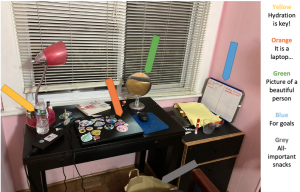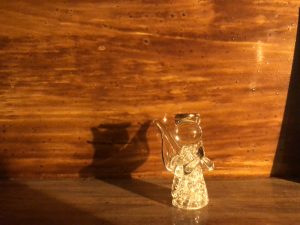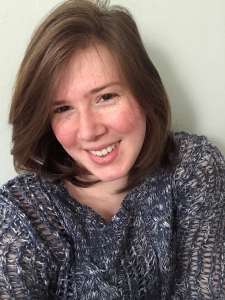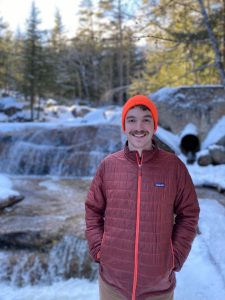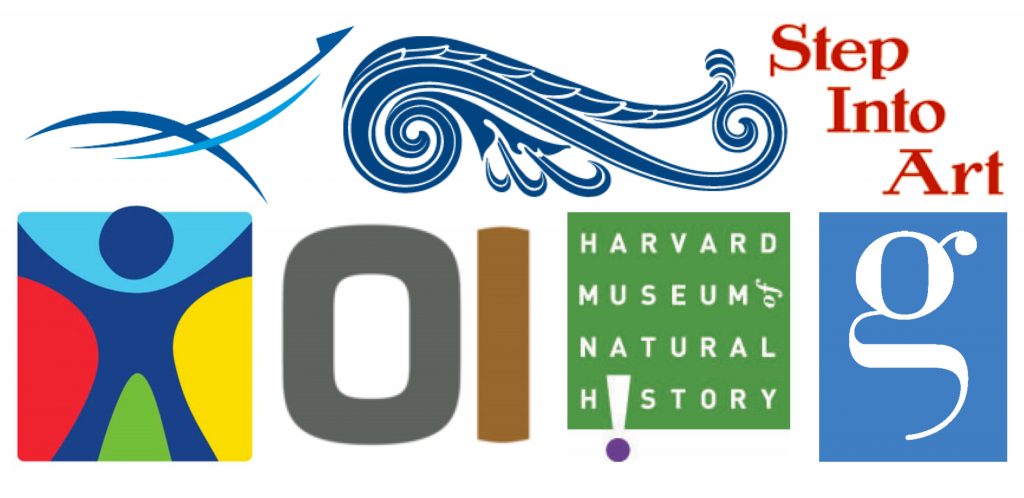
Last March, the museum world shut down. Closing to the public, many museums laid off staff and shifted into survival mode. It was a scary prospect for students in the museum programs at Tufts—would there be jobs when we graduate? Even more immediately—how could we fulfill our practicum requirements?*
Personally, I had a lot of trouble finding an internship. I scoured empty internship portals and sent my resume and cover letters into countless voids. I heard from a few institutions that had halted their internship programming because they did not have the budget to pay their interns. While I appreciated that more museums are paying their interns, things were starting to feel hopeless.
Eventually, I lucked out and coordinated an internship at the Harvard Museum of Natural History after reaching out to the Director of Education. I had the opportunity to help translate HMNH’s annual ‘I Heart Science’ festival into a virtual event and created a series of ‘Specimen Spotlights’ with museum volunteers.
After my ordeal of finding an internship, I wanted to know how my colleagues navigated the museum internship wasteland. I sent out a survey to everyone in the Tufts museum studies program who completed an internship in Summer 2020, Fall 2020, or Spring 2021. Only students who completed the survey are included in the data.
First of all, where did students complete their internships?
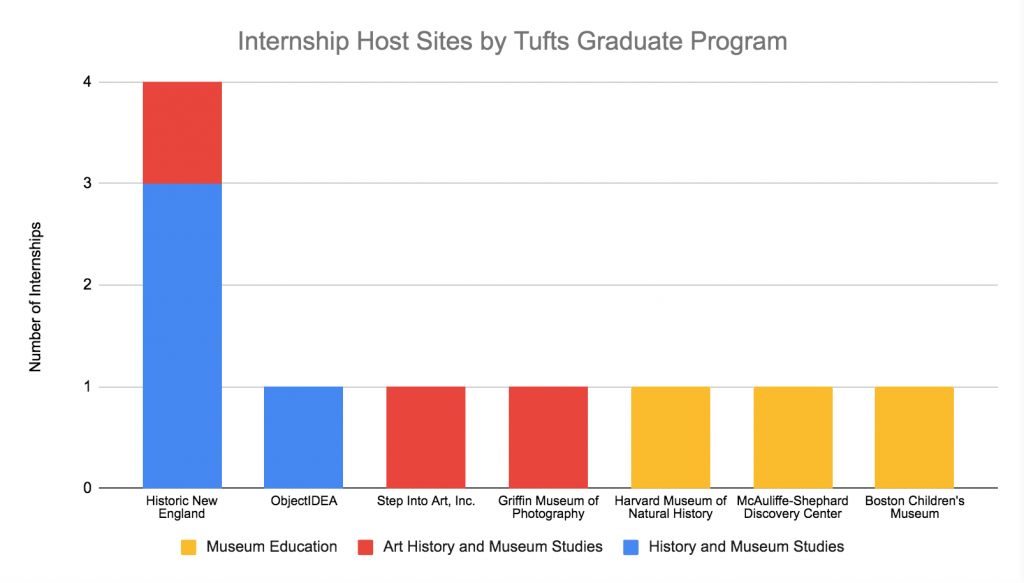
Hannah McIsaac, Margot Rashba, Alexandra Harter, and Julia Wohlforth interned at Historic New England in the Study Center, conducting research using HNE’s extensive archives. Other students interned at a variety of museums and cultural organizations around New England in operations, education, collections, and exhibitions.
Natalie Gearin interned at Step Into Art, Inc. where she “spent the duration of the internship developing and teaching a new third-grade curriculum, taught exclusively on Zoom, on the art of Kehinde Wiley including an initial lesson, a portrait making activity, a poetry workshop, and a sketching activity.”
Like Natalie, most of us had to adjust our internships to work through Zoom. Many museums remained closed throughout the summer, and some still have not reopened. Amanda Leith and Abigail Lynn were able to land in-person internships for the spring at the McAuliffe-Shephard Discovery Center and Griffin Museum of Photography, respectively.
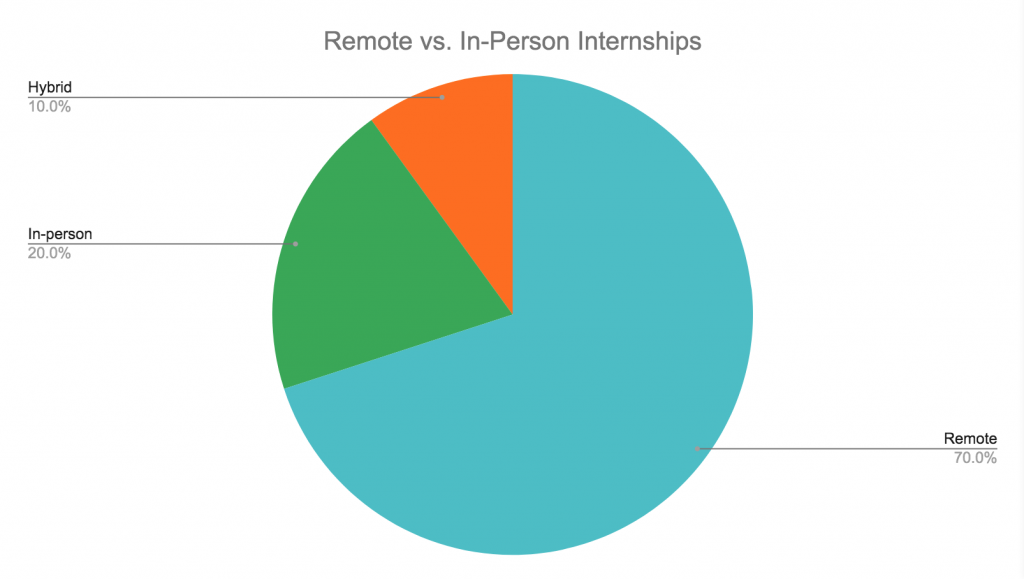
“I was lucky enough to have found an internship where I could be on-site, but the majority of my work could have been completed remotely in case everything shut down again.”
Abigail Lynn
Sayyara Huseynli, who works both remotely and in person at the Boston Children’s Museum, found a silver lining in her museum’s continued closure. “I am going to the museum in person on Saturdays, so my supervisor, security, and I are the only people in the whole building. Thanks to this, I was able to have some playtime in the exhibits. My favorite experience was crawling through the hanging bridge in the Construction Exhibit.”
When searching for an internship, I threw my resume at many walls, hoping something would stick. Eventually, it did. I was curious about how my peers fared in their internship hunt.
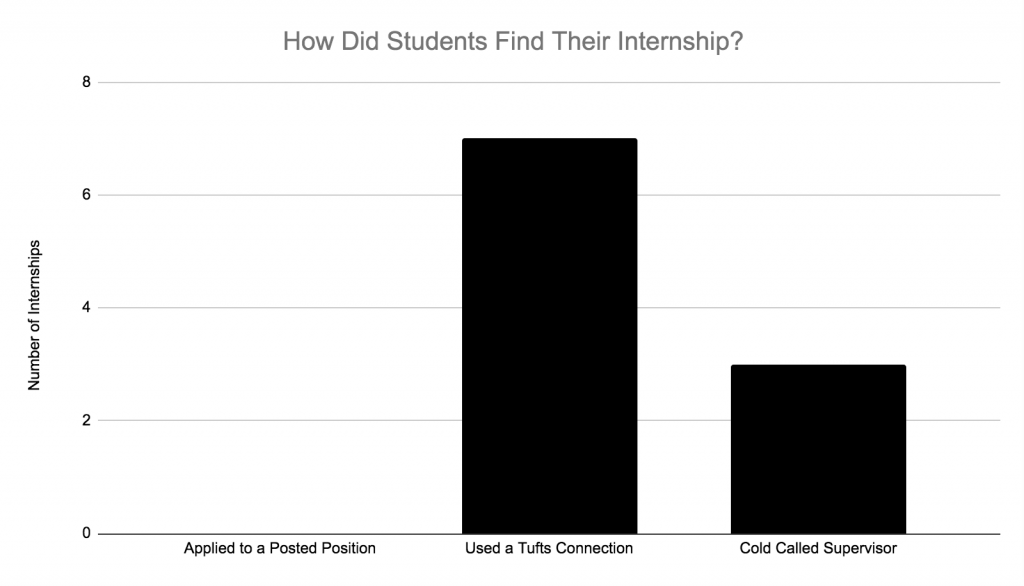
Many students met their supervisor through Tufts, either as a professor or guest lecturer. Rachel Christ interned at ObjectIDEA, an exhibit design and interpretation planning firm founded by Matt Kirchman, one of the Exhibition Planning professors at Tufts. Others met their supervisors through Tufts advisors. A few of us managed to find internships with cold calling, but no one just applied to a posted position. There were just were so few options. Fortunately, we were able to find opportunities after a little digging.
This year has hit the museum world hard, yet I feel so privileged to have been able to learn and grow in an institution that was navigating the catastrophe. Though it’s not what I expected my practicum to look like when I enrolled in the program, I learn a ton and developed into a more well-rounded museum professional.
*Due to the pandemic, students could opt to take a class in lieu of an internship.
